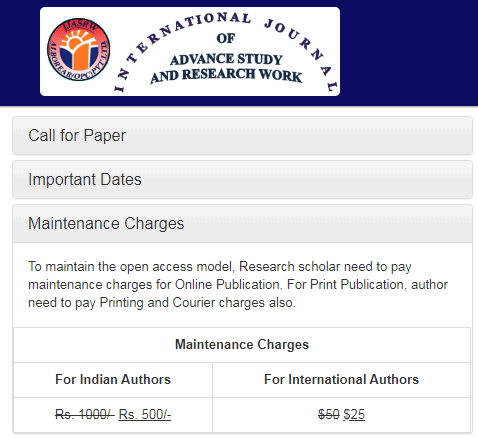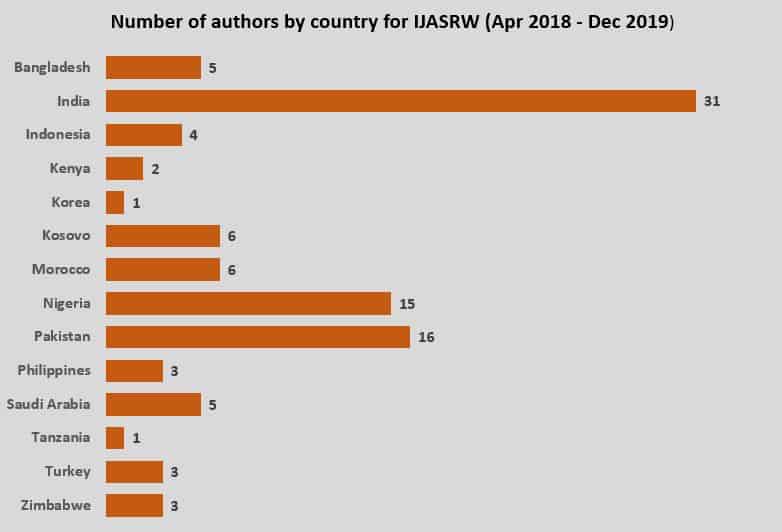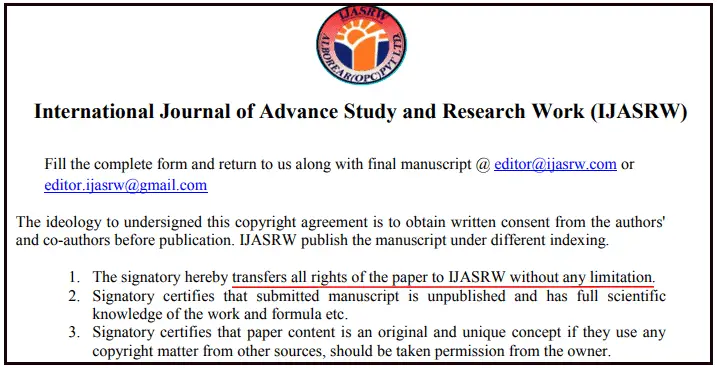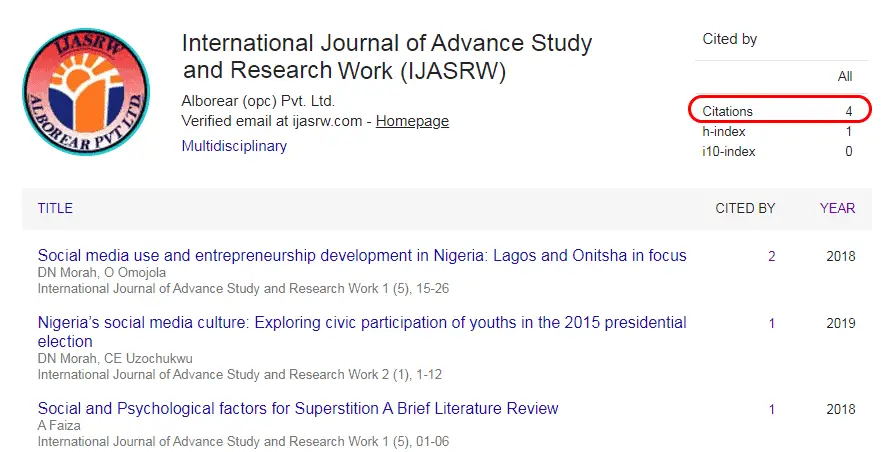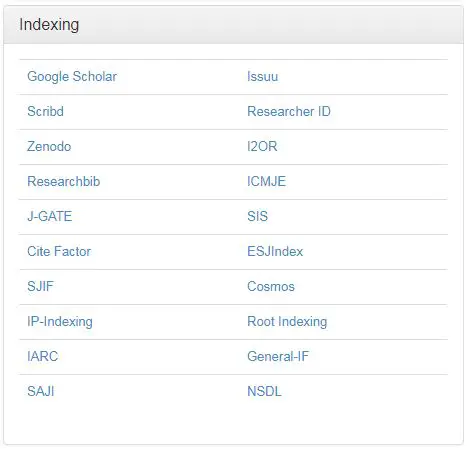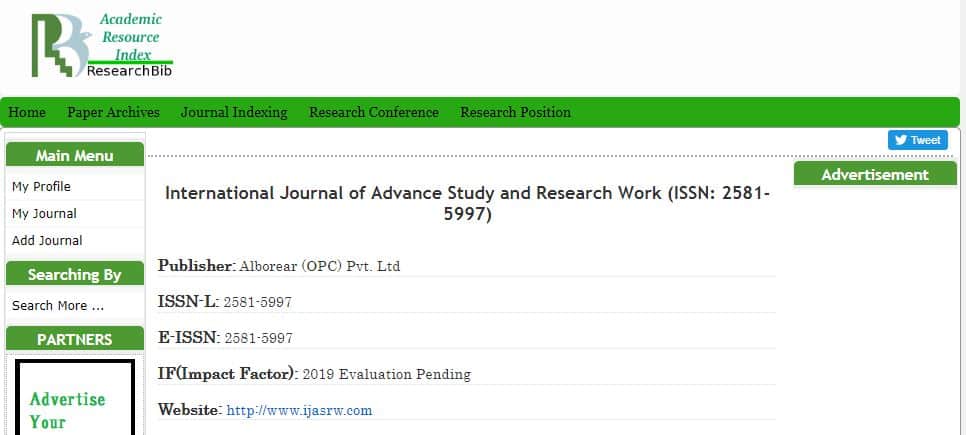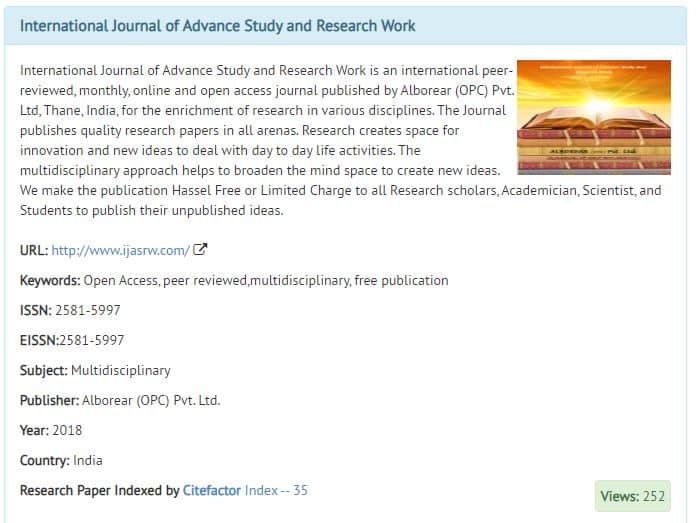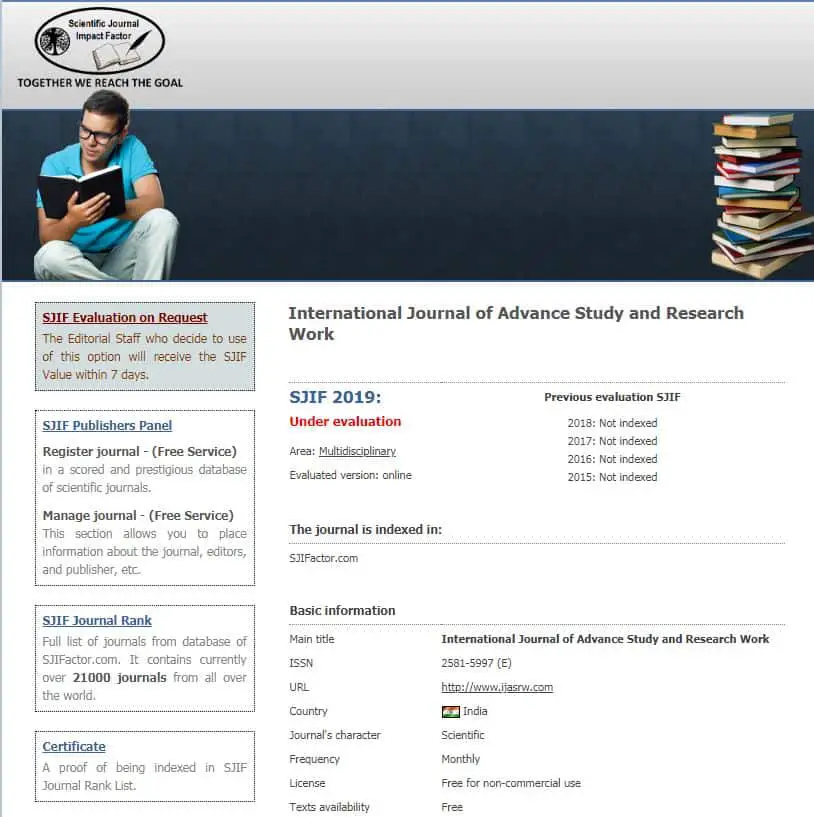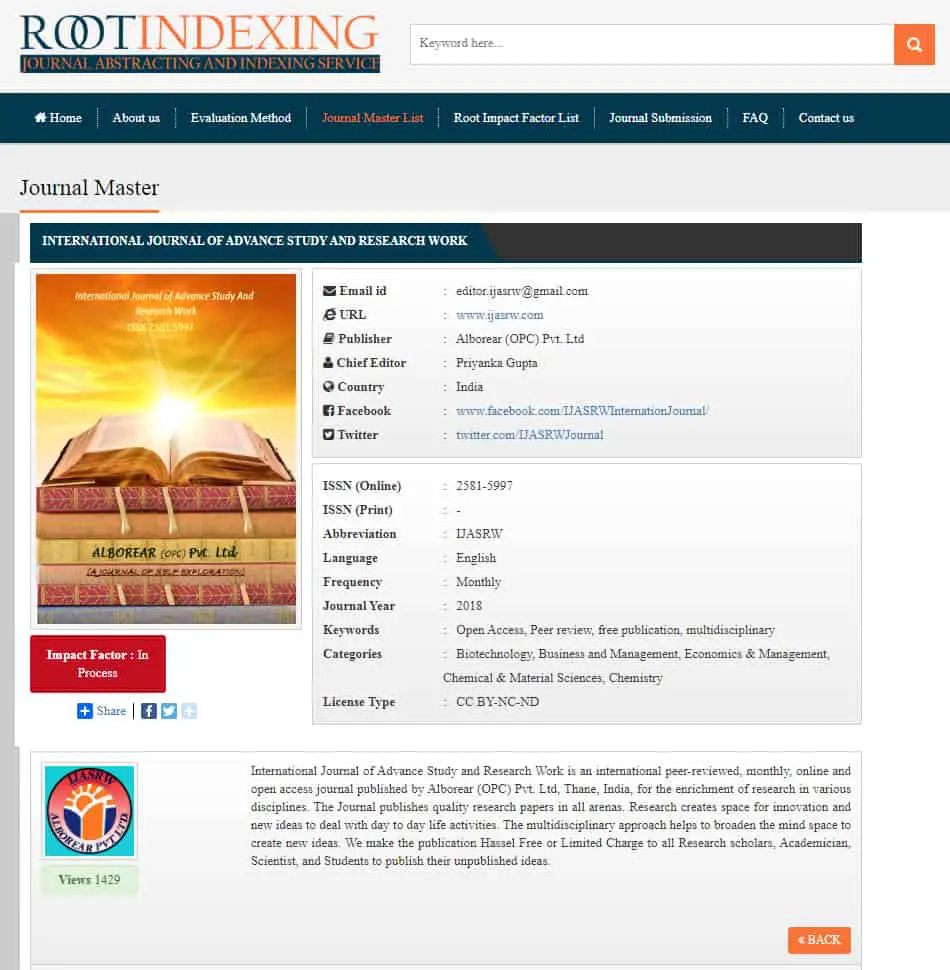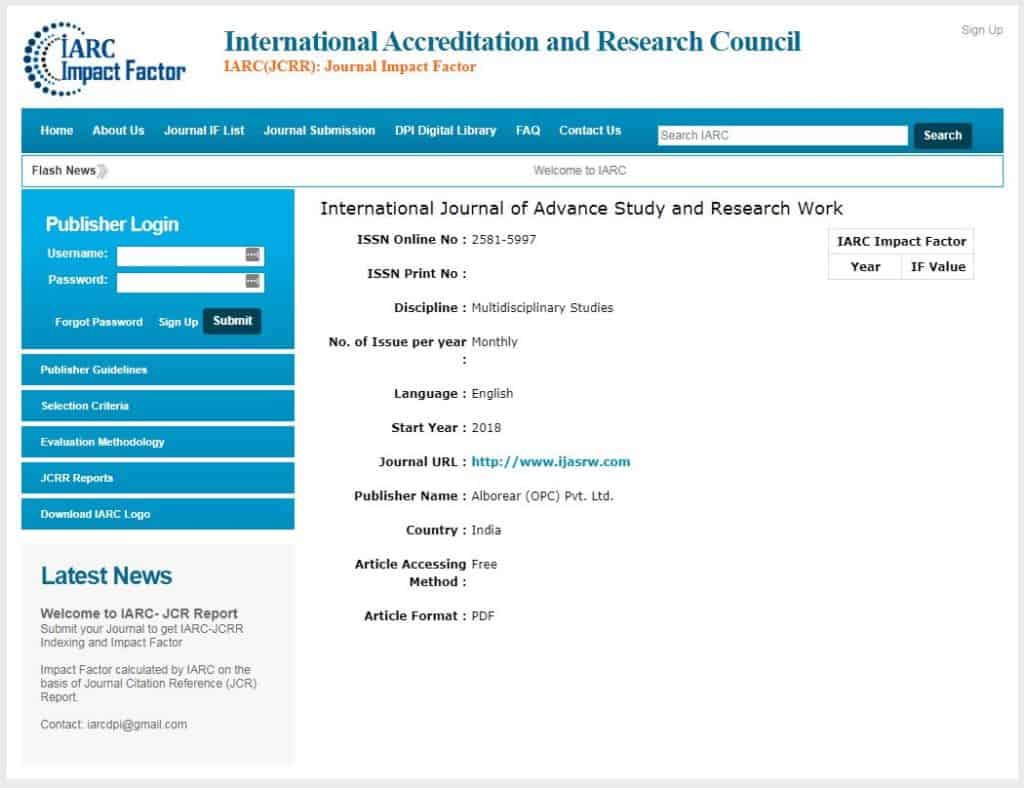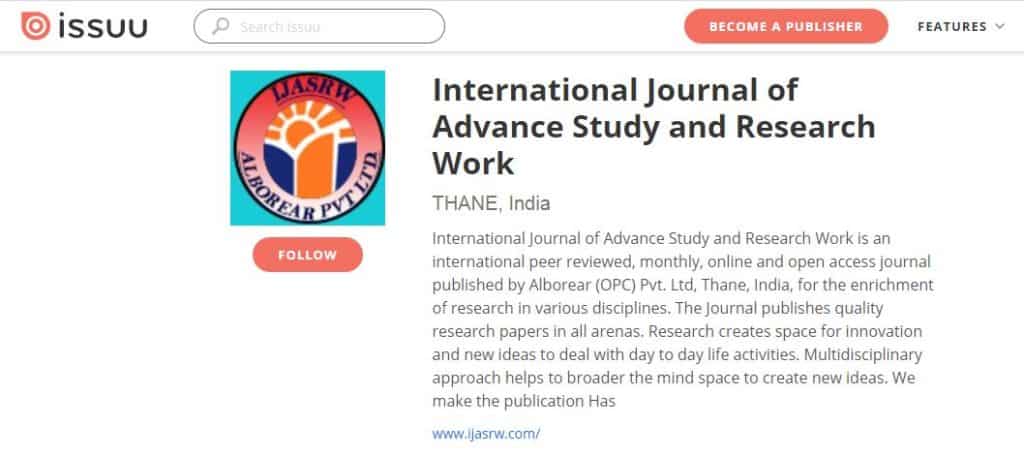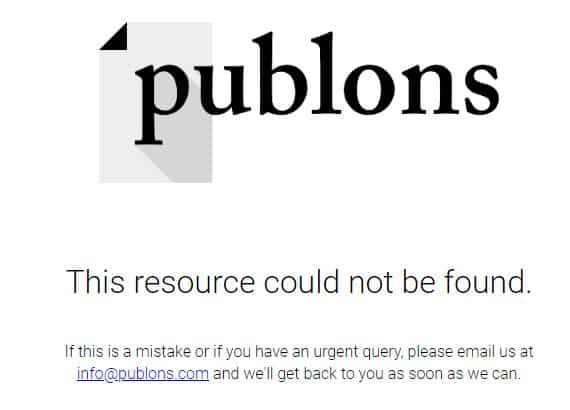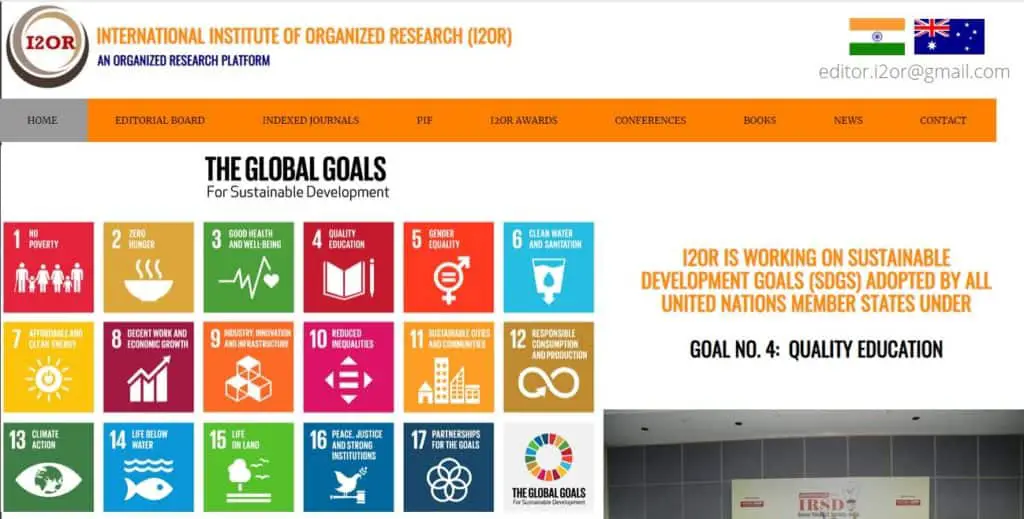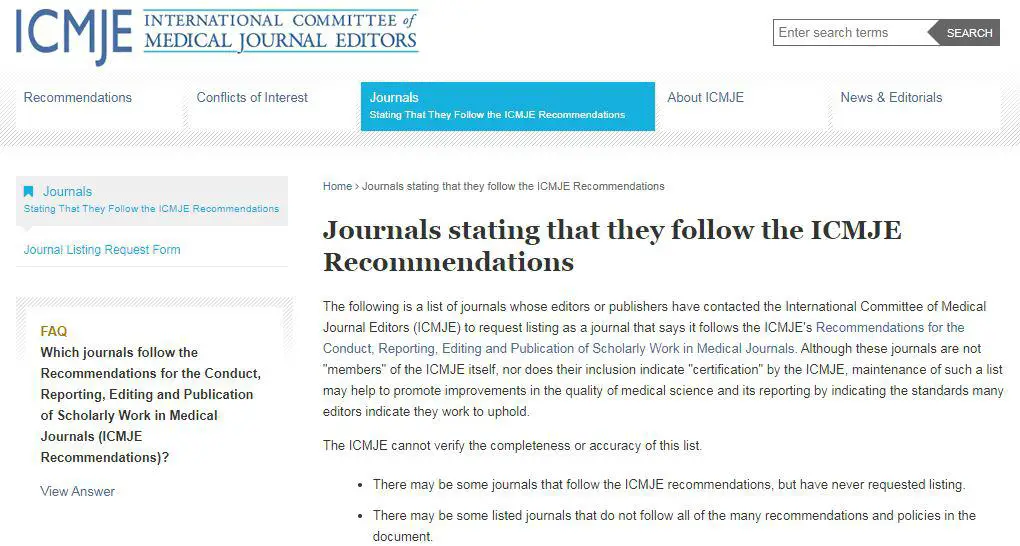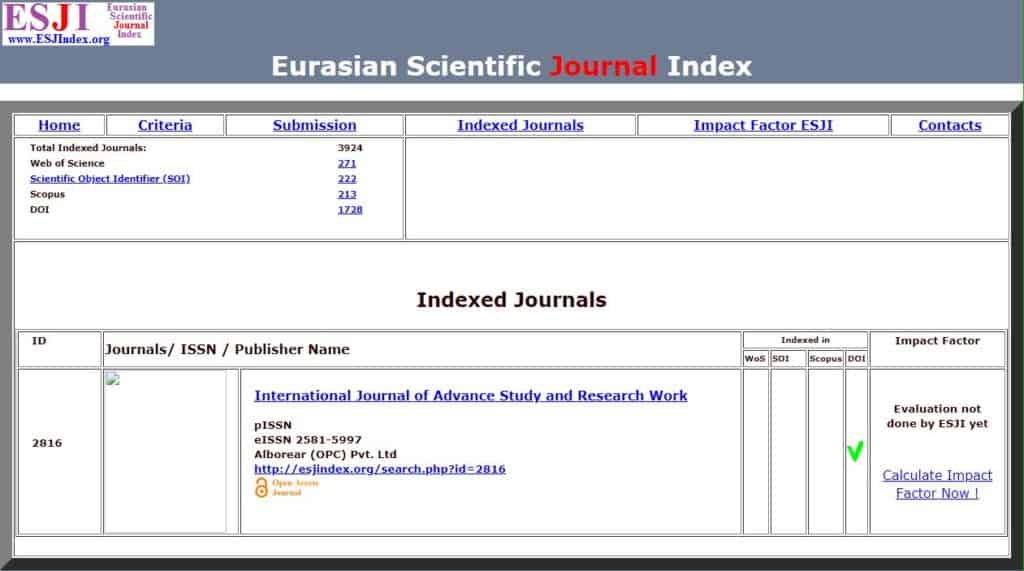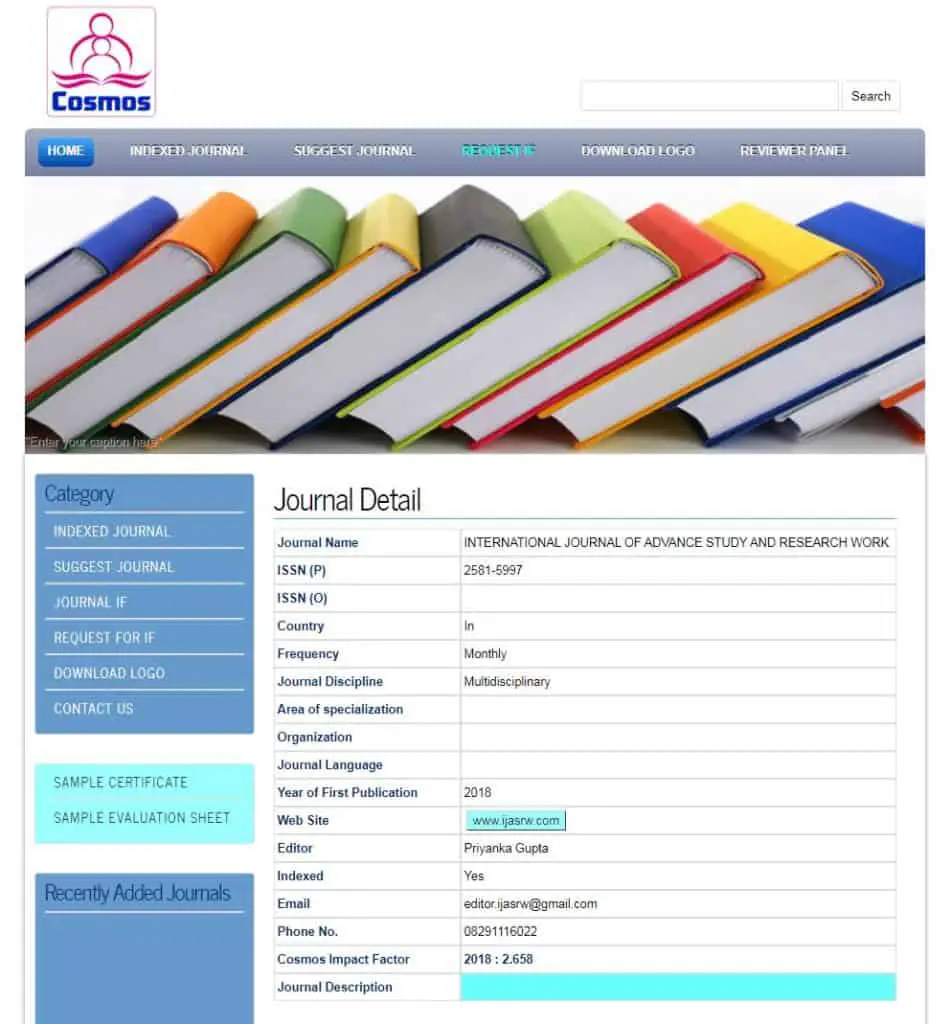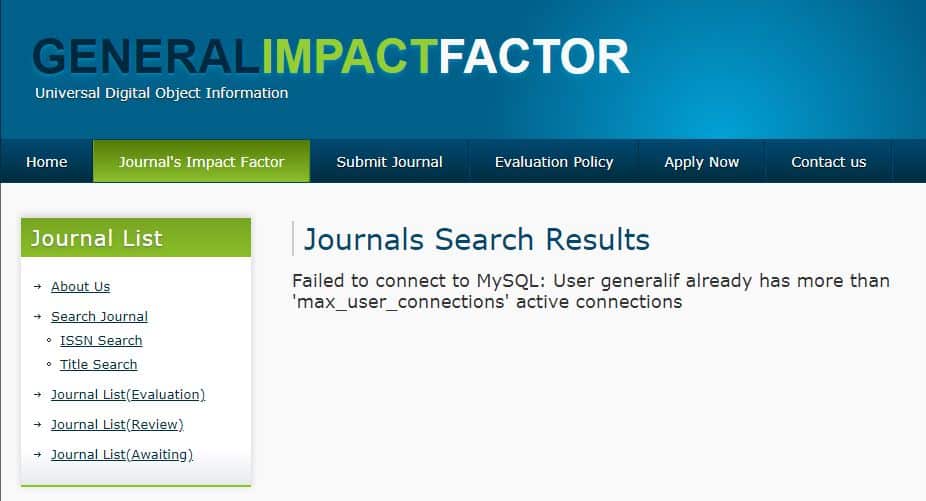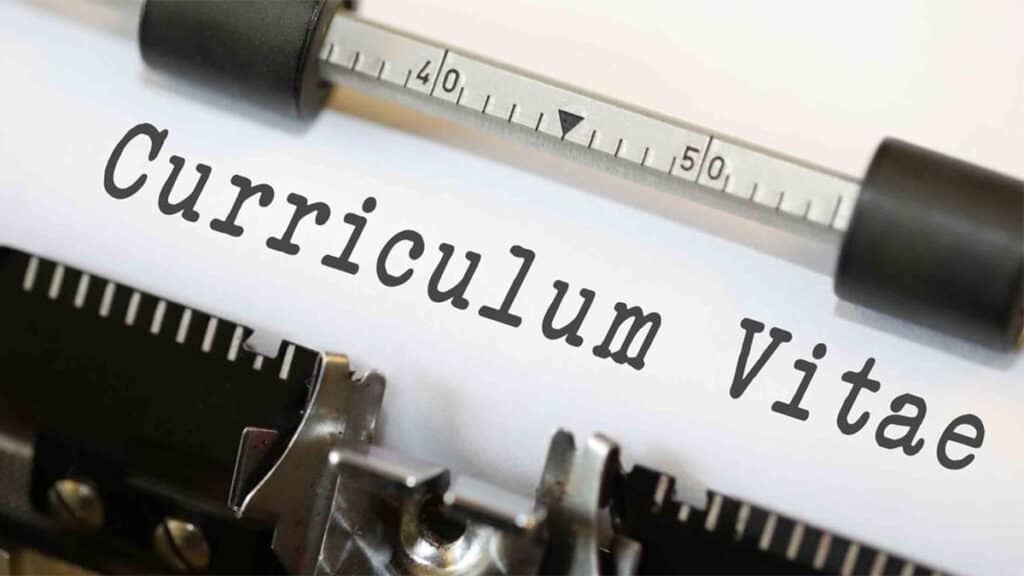Disclosure: This page contains affiliate links. This means, at no additional cost to you, we receive a commission if you click through and make a purchase.
Recently, we saw an email from a journal asking the recipient to submit a paper. Looking at the email, we immediately assumed it was a predatory journal, but as we looked at it a little closer, we started to wonder whether it was predatory or whether the journal editors were perhaps just a little inexperienced or naive.
We thought it was worthwhile just recording some of our thought processes as we looked through the web pages of the journal and the conclusions that we reached.
It is probably a little unfair to focus on this one journal. It is not our intention to be unfair, but the journal did grab our attention as it seemed a little different to some others we had seen, so we thought it was worth taking a closer look.
We also hope that you can take some of these ideas when looking at other journals.
If you are new, or relatively inexperienced, in scientific publishing you might want to seek further advice. The book “How to Write and Publish a Scientific Paper” might be useful. You can link to it here.
The Journal
The journal we are looking at is the International Journal of Advance Study and Research Work (IJASRW). It has an ISSN of 2581-5997.
IJASRW is published by Alborear (OPC) Pvt. Ltd. Thane, India. It was first published in April 2018. It published nine issues in 2018 and (at the time of writing, 7 Jan 2020) it had published twelve issues in 2019. This complete its 2019 volume as the twelfth issue was published in December 2019.
IJASRW is an open access journal, meaning that once your paper has been accepted there is an Article Processing Charge (APC). This means that you have to pay a fee to have the paper published. The benefit is that the paper is freely available to anybody who wants to access it. This is different to a subscription-based model where you would either need to have a subscription to the journal or pay a fee for specific article.
It is the open access movement that gave rise to predatory publishing, which has brought all the problems, and benefits, that we face today.
Journal's positive points
1. Publication Schedule
As mentioned above the journal has been in press since April 2018. Since that time, it has published an issue every month (click on graph to expand it). That is 21 issues (Apr 2018 – Dec 2019).
The journal should be applauded on getting out an issue every month but given that in seven of those issues they only published one paper and in six of the issues , they only published two papers, it might have been wiser to start off as a quarterly journal?
2. Digital Object Identifier (DOI)
Each article that is published by the journal has been assigned a DOI. We see this as a positive, although it is easy to register for a DOI and some journals promote this in a way that having a DOI is some sort of validation of the quality of the journal. It most certainly is not. We have another article that looks at this topic.
Having said that, when we tried to access a paper via its DOI it was not found. For example, the paper:
“The Changing Face of Education Needs Makeover through Assessment for Learning” by Dr. Sushma Singh [PDF]
…. has a DOI of ‘10.5281/zenodo.1250268‘. If you try and access this paper (accessed 7 Jan 2020) using its DOI URL – https://dx.doi.org/10.5281/zenodo/1250268, it says that the DOI is unknown.
We also checked a few more DOIs and none of them seemed to work, although we did eventually found one that did – https://doi.org/10.5281/zenodo.1218381.
3. Article Processing Charges (APCs)
It is interesting to look at the fees that the journal charges, although it is not always easy to find what the fees are.
For this journal it is very easy to find as it is a menu item on the home page, and that is to be welcomed and the journal should be applauded for that.
Moreover, the APCs are actually quite reasonable. Even $50 is a lot cheaper than many predatory journals and they are offering a reduction of 50% at the moment.
This would suggest that this journal’s main motivation is not the bottom line and they are actually trying to build up a reputable journal?
Areas of Concern
In looking at the journal’s web site, these are some negative points that we identified.
1. Quality of articles
We are not experts in the areas covered by the journal, so this assessment only considers generic issues.
Some of the articles were quite short (perhaps only two or three pages) and the number of references were often limited.
In one 20 page article [PDF], the literature review is only four lines and it only references two papers. Moreover, those two papers did not appear in the list references at the end of the paper.
Moreover, the three references that are given are:
[1] NIE Singapore learning, (Teaching and Mentoring Program Run -3 by DOE of GNCT of Delhi).
[2] Assessment for learning website by Curriculum Corporation of Australia.
[3] Assessing Student Outcomes by Robert J. Marzano, Debra Pickering and Jay McTighe.
… it is difficult to see how you could access these references and, we suspect, that only one of them is a journal paper.
In another article [PDF],that is only two pages, there were five references but none of those were to the scientific archive. The references are:
[1]. Hamid Mohsin (2007). The Reluctant Fundamentalist. London: Penguin Books. Print.
[2]. Delillo Don (2007) Falling Man. New York: Scribner. Print.
[3]. Updike John (2006). Terrorist. New York: Ballantine Books. Print.
[4]. Anurag Kashyap dir. Black Friday perf. Kay Kay Memon, Pavan Malhotra, Aditya Shrivastav, Imtiaz Ali, Pratima
[5]. Kazmi, Zakir Hussain. India. 2007.
Three of the references are to books [1,2,3]. The other two [4,5], to be honest, we are not sure what the citation means.
Another three page paper [PDF] only cited four sources and none of these were to the scientific literature. The references were:
1 Census 2011, Govt. of India.
2 Ibid.
3 “List of universities”. Education info India. Archived from the original on 11 April 2017. Retrieved on 27 October 2018.
4 “List of Universities in Uttar Pradesh”. Education department of U.P. Archived from the original on 21 June 2012. Retrieved on 27 October
2018.
5 http://naac.gov.in/index.php/assessment-accreditation#process.Retrieved on 27 October, 2018.
6 Ibid.
7 Ibid
We could have looked at other papers, but we stopped the cursory analysis at that point.
In our view, the three articles we looked at make for very weak articles and does not give confidence in the journal.
2. Authors/Country Diversity
We looked through each of the 48 papers that were published in the journal, shown in the graph on the left – click to expand.
We were interested to see how diverse the authorship was. We did not do a deep dive, but the figure shows how the 101 authors were split across different countries. We note that some authors may be repeated if they appeared on more than one paper, as we just looked at each paper and recorded the countries for each author.
Perhaps not surprisingly, the highest number of authors come from India (as the journal is based in India).
What does stand out is that there are no authors for countries such as the USA, UK, Canada or Australia. Europe is also largely ignored.
Given that the name of the journal is the International Journal of Advance Study and Research Work, there is still some work to do if the journal wants to be recognized as an international journal in a way that most people would recognize.
3. Aims and Scope
The aims and scope, as stated on the journal’s web site says “International Journal of Advance Study and Research Work (IJASRW) is the multidisciplinary, peer review, open access journal. Our ideology is to sustain the research work and provide platform for all research scholars from various domains. Research itself a vast word which require in all disciplines. We provide Hassel free service to all researchers with limited charges. Journal is dedicated to publish worthy and innovative research papers which provide meaning to society.“
To us, this does not provide the aims and scope except, perhaps, for the last sentence. But the real problem is that the aims and scope are just too wide. You can literally submit anything to this journal as there are no parameters to follow. This is supported by some of the papers that have been published. Take a look at these few titles.
– Women related News: A Comparative Study of the Portrayal by National and Local Print Media
– 9/11 Incident and its Impacts: The Worst Portrayal in Selected Post 9/11 Literature
– Effect of Macroeconomic Variables on the Economic Growth of Pakistan
– Bacterial, Fungal, and Protozoal Microflora of Hay
To us, these papers do not feel that they should have come from the same journal and the journal is just too broad.
4. Editorial Board
The Editorial Board is (very) large. When we looked at the website, there were 127 people listed, with another 25 listed as members of the Reviewer Board. This, in our view, is way too many people to support a journal that has so far published only 48 papers. It raises the question, why are there so many? We cannot answer that but we did note that 83 (65%) members of the Editorial Board were from India. This seems disproportionate for an international journal. Similarly, 19 of the 25 (76%) Reviewer Board members were from India. Again, this seems disproportionate.
One thing we do like is that the email addresses are listed for each member of the Editorial and Reviewer Board. This is unusual to see for a predatory journal and although we have not done this, it would be interesting to contact them all to ask if they are aware they are listed on this web site as a member of the board.
5. Important Dates
The most worrying aspect of this journal are the “Important Dates“. You’ll see a screen shot calling for papers for the Dec 2019 issue (Volume 2, Issue 12). The submission deadline is 20 Dec 2019, with the issue being published by 31 Dec 2019. This only gives eleven days, if you submitted the paper on the deadline, and there would be the Christmas holidays in between.
In fact, we are writing the first draft of this article on 24 Dec 2019 and the December issue was already published.
To us, the call for paper dates are not what we would expect from a high quality journal.
6. English
One of the criticisms often aimed at predatory journals is their usage of English. Unfortunately, this journal suffers from poor English. We have copied this text from their page on the “Peer Review Policy“.
“To maintain the quality of publication, we are dedicated towards standard evaluation process for approved manuscript publication. All submitted manuscript followed by the careful assessment process. In this process Reviewers and Editors play an important role to analyze the manuscript. We followed Double Blind Review Process, in which both reviewer and author are unknown about their identity. The important purpose to follow this process is to maintain confidentiality, unbiased and fair results for quality publication.
For review process, manuscript meets all the requirements and guidelines.
1.Initial Scanning: Submitted paper/manuscript have less than 10% plagiarism content and have less grammatical errors.
2.Review Process: If the submitted paper/manuscript has cleared the initial scanning, sent the paper for review. If all OK then we go for acceptance for publication else any revision required sent to author accordingly.
3.Acceptance and Publication: After completing all the formalities.“
Another example, from the Open Access statement:
“IJASRW is an open access journal which is freely accessible by all the authors without any obligations for their references and reading purpose. Open access model support the reading knowledge and encourage others to write and showcase their ideas to others and enhance their ideology which support towards the betterment.“
They are certainly not the worst example we have seen, but it is still not good and does not inspire confidence in the journal’s editorial standards.
7. Copyright
The journal requires you to complete a copyright form, part of which is shown here. We are not sure why authors have to assign the copyright to the journal. The idea of open access is that the paper is made available to everybody for free. In most cases, the copyright is retained by the author, but they accept that the paper is freely available, via the publisher. The problem we have with assigning the copyright to a journal is that, firstly they do not need it and secondly, if they do own the copyright they could decide to withdraw that from general distribution at any time and instead ask people to pay.
Copyright law is a little (a lot actually) outside of our area of expertise, but it does seem strange that this journal is asking you to sign over the copyright to them. If copyright is important to you, you might want to take legal advice or start with a couple of books. These two rate highly on Amazon; “Copyright: What Everyone Needs to Know” and “The Copyright Handbook: What Every Writer Needs to Know“.
8. Journal Impact
Given that the journal has been around for 18 months, or so, we thought we would have a look at the impact it was having. The journal kindly provides a link to Google Scholar, so we followed that. This is what we saw.
You can see that the journal has received four citations, to three of the papers that it has published.
We investigated a little further, by following the “CITED BY” links. To be honest, we were not surprised to find that the citations were all self-citations. For the first two papers, DN Morah had cited his own papers. In fact, not only had this author cited his own publications in IJASRW, but these citations were also from papers that had been published in IJASRW. So not only author self-citations, but also journal self-citations.
The third paper was also a self-citation by A Faiza. This time it was from a different journal (International Journal of Research in Engineering, Science and Management), but the author was citing himself.
This suggests that the journal is having little, or no, impact. Having said that, it is early days for the journal but to be recognized as an international, high impact journal but it should really have started attracting non-self citations; both by the authors and to the journal itself.
9. Indexing
If you look at the journal’s home page, there is a link to the external agencies which indexes the journal. The image on the left shows this (click it to expand).
The journal provides a link to each of the indices that it lists.
In these types of indexes you would typically hope (expect) to see agencies such as Scopus and ISI Web of Science (Clarivate Analytics).
We have looked at each link that is listed and make the following comments (we make a specific comment on whether we found an impact factor).
Google Scholar: We have discussed Google Scholar above. We would just add that Google Scholar is something that anybody can be part of and is not any indication of quality. It does have some measure of impact which, we discussed above, does not seem that high.
Scribd: Scribd is a system where anybody can upload papers (and other types of data). So, it is more of a repository system that an indexing system. It is certainly not a validation of quality. IJASRW do upload their papers to a Scribd channel they have created, so they have decided to index the journal on Scribd, rather than the other way round.
Zenodo: This is interesting in that this does appear to be a indexing system, which lists papers that have appeared in the journal. It is noticeable that the DOI for the journal has zenodo in it, for example https://doi.org/10.5281/zenodo.3526360, suggesting that this is not an external indexing system but one which the journal has some management of?
J-GATE: This link leads to a web site called https://jgateplus.com/home/. Once you are on the home page, you cannot actually search for anything as it is a subscription based service.
Cite Factor: Looking at the CiteFactor web site, IJASRW is listed as having an index of 35. Looking at how this impact (later referred to as an impact factor) it takes into account four factors (Quality of Publication, Maunscript Quality, Presentation Quality and Editorial Quality), along with Scientific Method and Citation Analysis.
SJIF: Looking at the web page, it says that IJASRW is under evaluation for 2019 and is is not indexed 2015-1028. So, it has under evaluation by SJIF (Scientific Journal Impact Factor) but that evaluation is not yet complete.
IP-indexing: If you follow the link on the journal’s web site, you arrive at a page which lists the journal. On the page there is no mention of an impact factor but if you dig deeper into the web site you will see that the journal has an IPI value of 2.4. The evaluation criteria are listed on the web site and include Quality of Publication (5 points), Quality of Article (5 points), Stability of Regularity of the Journal (5 points), Editorial and Reviewer Board Quality (5 points) and Presentation Quality (5 points). It is not clear how the actual score is calculated.
IARC: The link to this site shows that the journal is recognized. but it does not provide a year or an impact value.
SAJI: When you access the SAJI (Scholar Article Journal Index) web site, you need to search for the journal and get to a page that lists the journal. There is no mention of any impact factor.
Issuu: This website advertises itself as a place to “Instantly transform your images, text, videos, and PDFs into ready-to-publish content for every digital channel, format, and device.“. If you follow the link given on IJASRW’s web site it takes you to a page where it shows that the journal is listed but there is no mention of any impact factor.
I2OR: The I2OR (International Institute of Organized Research) web site promotes itself as a way “promote various domains to Education and Research around the globe to make it easily accessible and more organized.” If you search for the journal on this web site, it does appear but the link just takes you to the journal’s own web site. There is no mention of any impact factor.
SIS: The SIS web site does report IJASRW as a listed journal but it says that it is still awaiting an impact factor.
ESJIndex: The link to the ESJI (Eurasin Scientific Journal Index) web site, shows that it is recognized by the indexer. It states that it has yet to be evaluated by ESJI.
Cosmos: Following the link from the IJASRW’s web site, takes you to its Cosmos page. This shows that it has a 2018 impact factor of 2.658. A sample evaluation sheet [PDF] is given by Cosmos which provides details about how the impact factor is derived. We found this quite subjective.
Root Indexing: Following the link given by the journal, shows that IJASRW is indexed but it is still waiting for an impact factor.
It is interesting to look at these various indexing schemes and, in future articles we plan to look at some of these in a little more detail, along with their impact factors, just to see what they offer and how legitimate they are.
Final Thoughts
The aim of this post was to look at the journal web site and draw out some of the things that we saw. We chose this journal as we had to chose one, but what we looked at could be applied to many other journals. Indeed, there are many other things we could also look at, which we will cover in other articles.
Ultimately, we have to decide whether we would submit to this journal. Our view would be no. It has the look and feel of a predatory journal and even if you do not feel this is the case why take the risk. There are so many other journals out with, with much better credentials that you may as well err on the side of caution and submit to those journals.
Finally, apologies for the length of this post, but there was so much to say.



